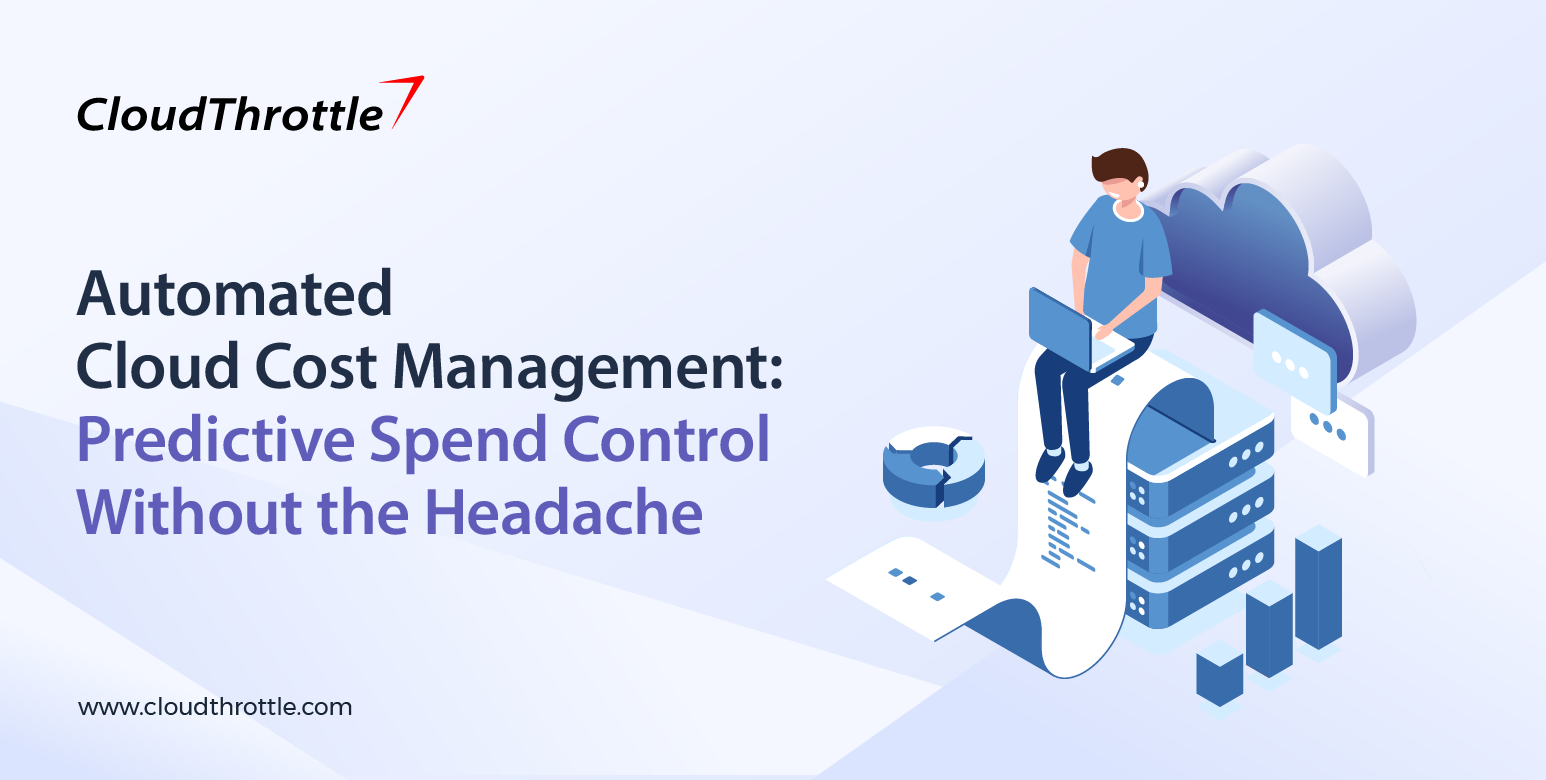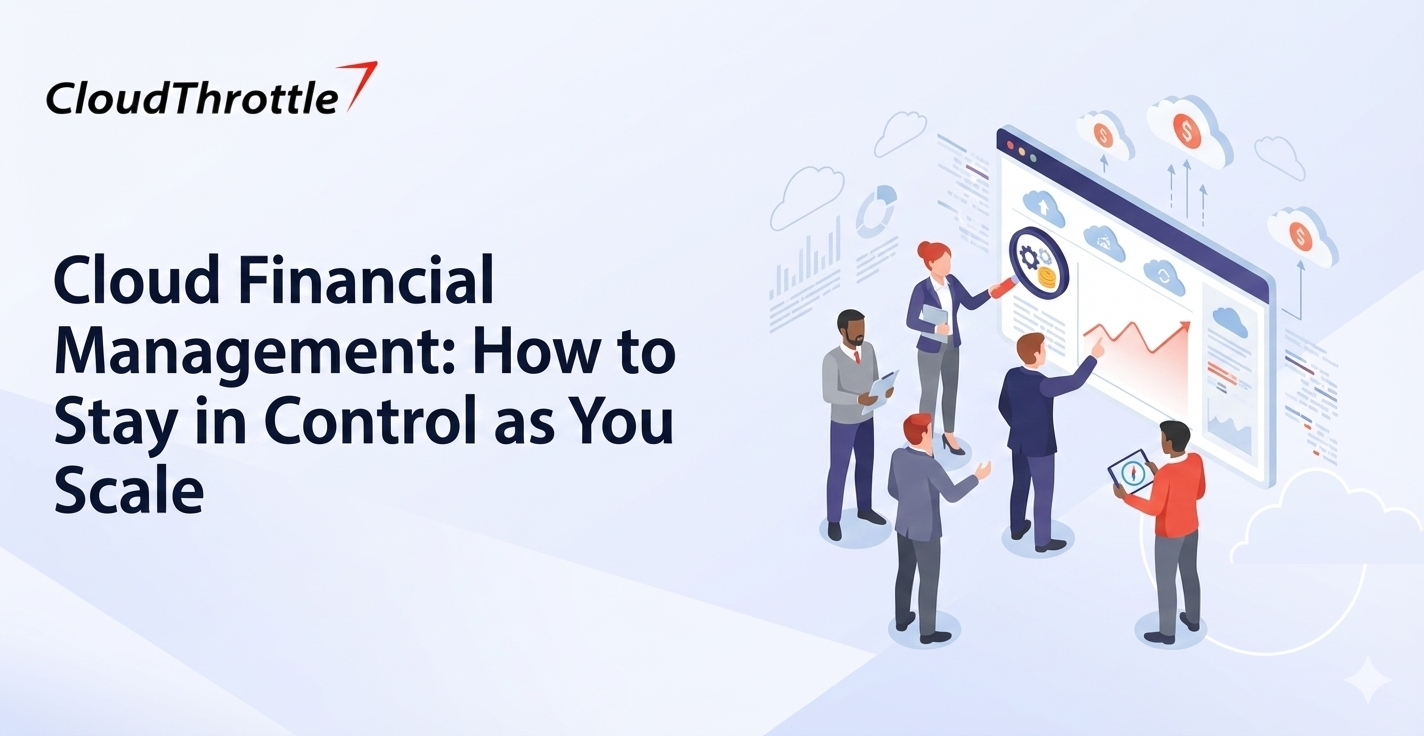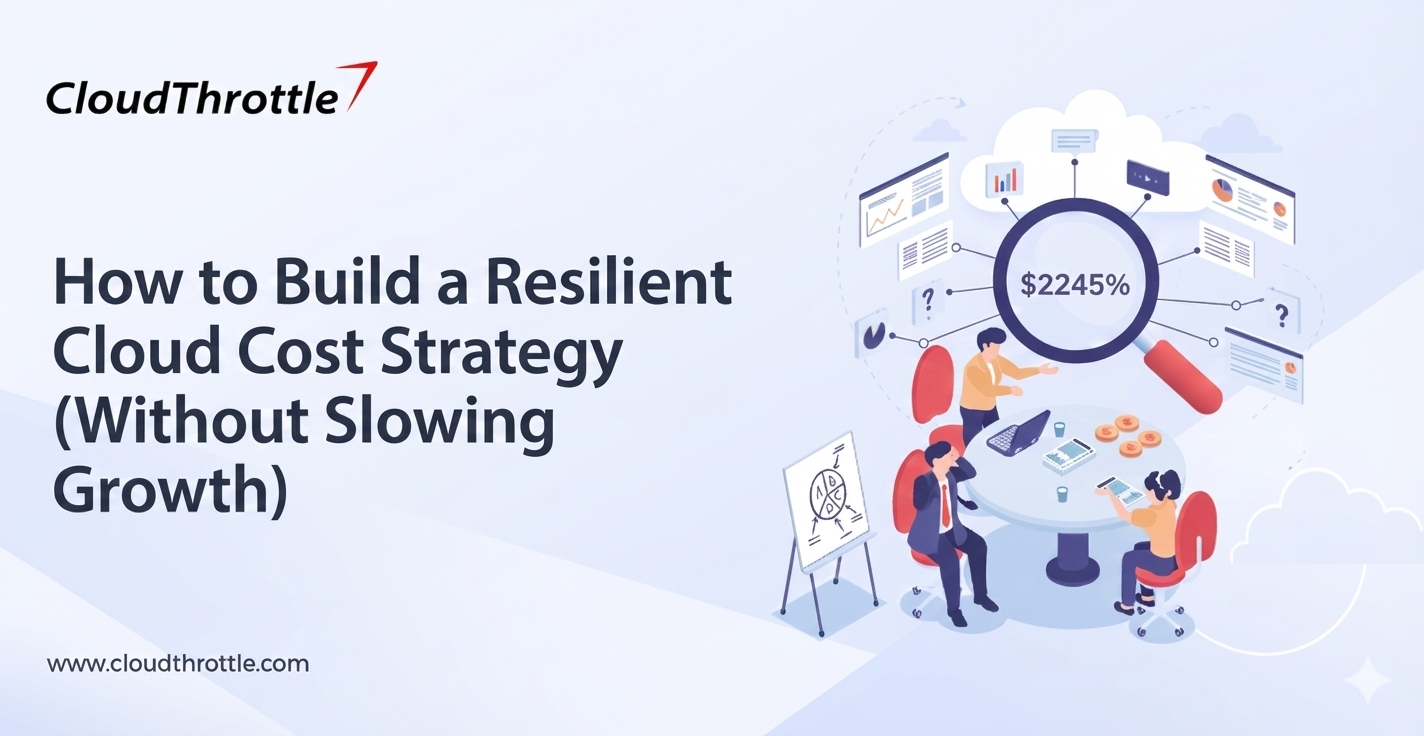According to Flexera’s 2024 State of the Cloud report, organizations waste 29 percent of their cloud spending each year due to unused or underutilized resources. Tackling that inefficiency requires more than sporadic audits and manual reviews. This guide explains how automated cloud cost management and predictive budget control combine to deliver continuous savings without draining engineering time.
What Is Cloud Cost Management?
Cloud cost management refers to tracking, analyzing, and governing expenses across public, private, and hybrid cloud environments. It involves:
- Establishing budgets and chargeback models
- Tagging resources for accurate cost allocation
- Generating dashboards that highlight spending by team and service
Strong governance helps teams understand where every dollar goes. It prevents surprises on monthly invoices and ensures that resource choices align with business priorities.
Why Predictive Spend Control Matters?
Traditional cloud cost management focuses on reacting to overspend after it appears on a bill. Predictive cloud spend control flips that model. It uses historical usage patterns and forecasting algorithms to anticipate future costs and raise alerts before budgets are breached. Predictive control offers:
- Early detection of emerging cost spikes
- Budget adjustments tied to seasonal campaigns or product launches
- Proactive optimization recommendations
Moving from reactive to predictive saves money and prevents last-minute budget fire drills when invoices arrive.
Core Components of Automated Cloud Cost Management
Automating cost governance with Cloud cost management requires the orchestration of data pipelines, policy engines, and alerting systems. Key elements include:
- Resource Inventory and Tagging
A complete catalog of virtual machines, containers, databases, and storage volumes must include metadata such as owner, environment, and project. Tags feed policies that drive cost controls. - Cost Data Collection and Normalization
Ingest billing data from cloud providers and normalize pricing across regions and services. This unified dataset powers real‑time dashboards and forecasts. - Policy Definition and Enforcement
Define budgets per cost center and set threshold alerts. Enforce rules that suspend or scale resources when costs approach limits. - Forecasting and Anomaly Detection
Leverage time series analysis and machine learning models to predict spend and flag deviations from expected patterns. - Automated Remediation
Integrate with orchestration tools so that policy violations trigger automated responses such as rightsizing instances or archiving idle storage. - Automated Cloud cost management
Streamlines these processes, ensuring continuous cost control and proactive optimization across your cloud environments.
Step-by-Step Guide to Predictive Cloud Cost Automation
Implementing a robust cloud cost automation system involves phased workstreams:
Step 1: Baseline Current Spend
Gather three to six months of billing data and break it down by service, project, and environment. This baseline anchors forecasts and identifies initial cloud cost optimization opportunities.
Step 2: Tag and Categorize Resources
Audit your cloud inventory, tag every compute instance, database cluster, and storage bucket. Standardize tags for owner, environment, application, and business unit so that reports align with organizational structure.
Step 3: Define Budgets and Thresholds
Set monthly budgets for each cost center. Determine alert levels at 50, 75 and 90% of budget utilization. These trigger points give teams clear milestones for review and action.
Step 4: Deploy Cost Data Pipeline
Automate ingestion of billing files or API data into a data lake or warehouse. Normalize costs by region and account. Build dashboards that update hourly or daily to reflect near‑real‑time spend.
Step 5: Enable Forecasting Models
Train forecasting engines on historical data to predict next month’s spend per service. Validate models against actuals and refine parameters for accuracy within 5% of real invoices.
Step 6: Implement Anomaly Detection
Configure algorithms to detect sudden jumps in cost, such as a 10% daily increase in compute spend. Route these alerts to on‑call channels or ticketing systems.
Step 7: Automate Remediation Actions
Link policy violations to remediation scripts. For example, rightsizing underutilized instances or moving aged logs to archival tiers. Confirm that automation runs in a sandbox before applying to production workloads.
Step 8: Integrate with CI/CD
Embed cost checks into continuous integration workflows so that pull requests running infrastructure changes fail when projected monthly spend exceeds defined budgets. This prevents cost leaks before they deploy.
Step 9: Establish Governance Cadence
Host weekly cost review meetings where teams review dashboard insights, discuss anomalies, and adjust budgets or policies. Publish monthly executive summaries that highlight savings achieved and forecast accuracy.
By following these steps, organizations maximize the value of cloud cost automation and drive ongoing cloud cost optimization.
Benefits of Cloud Cost Optimization through Automation
Automating spend control with cloud cost automation unlocks a range of advantages:
- Continuous Cost Visibility
Real‑time dashboards keep teams informed of spend against budgets. Line‑item views by service and account drive accountability. - Reduced Budget Overruns
Threshold alerts and automated remediation shrink the window between cost spike and corrective action, cutting overspend by up to 20% in early deployments. - Reclaimed Engineering Time
Engineers no longer perform manual audits or chase invoice anomalies. They focus on innovation instead of cost firefighting. - Data‑Driven Forecasting
Predictive models increase confidence in budget planning. Finance teams allocate resources based on anticipated demand rather than historical guesswork, driving better cloud cost optimization. - Faster Response to Anomalies
Automated alerts route to the right teams instantly. Incident workflows drive investigation and rapid remediation, further enhancing cloud cost optimization.
Common Challenges in Cloud Cost Automation
- Adoption of automated cloud cost management can stumble on several fronts:
- Incomplete Tagging Coverage
Untagged resources hide spend in untracked accounts, undermining the accuracy of cloud cost management. - Data Latency
Delays in billing data ingestion reduce the effectiveness of real‑time dashboards, limiting the benefits of automated cloud cost management. - Policy Complexity
Overly granular rules become hard to maintain, making cloud cost automation challenging. - False Positives
Naïve anomaly detectors trigger alerts for expected seasonal variations, which can disrupt cloud cost optimization efforts. - Organizational Silos
Disconnected teams fail to act on alerts without clear ownership, hindering successful cloud cost automation and management initiatives.
Best Practices for Predictive Cloud Spend Control
Address challenges in automated cloud cost management and cloud cost automation with these tactics:
- Enforce Tagging at Provision Time
Use guardrails in infrastructure as code templates that reject untagged resources before creation. This foundational step strengthens automated cloud cost management. - Streamline Data Pipelines
Automate end‑to‑end billing data flows with as little human intervention as possible. Monitor pipeline health with synthetic tests to keep your cloud cost automation system robust. - Simplify Policy Definitions
Group resources into logical categories and apply broad budgets. Refine rules only where cost variability demands it, supporting more efficient automated cloud cost management. - Tune Anomaly Detection
Ingest seasonality and usage calendars into models so that they ignore known spikes. Adjust sensitivity thresholds over time for smarter cloud cost automation. - Assign Clear Ownership
Define cost center leads who receive alerts and drive remediation. Include finance, DevOps, and application owners in the governance loop to ensure the success of your automated cloud cost management initiatives.
Selecting an Automated Cloud Cost Management Platform
Evaluating vendors requires attention to several criteria:
Running a proof‑of‑concept on two or three platforms reveals which tool aligns best with team workflows and technical environments.
Advanced Techniques for Cloud Cost Automation
After foundational systems operate smoothly, automated cloud cost management and cloud cost automation enable you to explore more sophisticated methods:
- Machine Learning‑Based Rightsizing
Train models to identify optimal instance sizes based on historical CPU, memory, and I/O metrics. Automated cloud cost management allows you to automate rightsizing recommendations and execute changes in off‑peak windows.
- Predictive Spot Instance Management
Forecast spot instance interruption rates and schedule flexible workloads accordingly. Use cloud cost automation to balance cost savings with risk tolerance by dynamically shifting workloads between on‑demand and spot capacity.
- Policy as Code
Treat cost policies like security rules in version control. Leverage cloud cost automation to require pull request reviews for any changes to budget thresholds or automation scripts.
- Cross‑Platform Cost Correlation
Aggregate spend data from AWS, Azure, and Google Cloud. Automated cloud cost management makes it easier to correlate cost drivers across platforms and identify duplicated workloads or opportunities for unified savings strategies.
- Chargeback and Showback Automation
Automate the generation of cost allocation reports for business units. Integrate with financial systems to drive accurate internal billing and promote accountability using cloud cost automation.
Building a Culture of Cost Consciousness
Technical controls succeed when teams embrace cost awareness as part of their day‑to‑day work, powered by automated cloud cost management and cloud cost automation:
- Training and Onboarding
Include automated cloud cost management modules in new hire bootcamps. Demonstrate dashboards and show how changes impact budgets.
- Gamification
Recognize teams that achieve the greatest savings or forecast accuracy through cloud cost automation. Celebrate wins in all‑hands meetings.
- Regular Communication
Publish weekly cost insights and highlight cloud cost automation and optimization successes in company newsletters.
- Executive Sponsorship
Secure leadership support for budgets that include investment in automated cloud cost management tools and staff dedicated to cost governance.
Measuring the Success of Cloud Cost Automation
Track key performance indicators to prove ROI:
Regularly review these metrics and adjust strategies to sustain improvements over time.
Conclusion
Implementing automated cloud cost management and predictive cloud spend control eliminates the headache of surprise invoices and wasted resources. Organizations gain continuous visibility, proactive optimization, and the agility to scale without fear of runaway costs. Take the next step toward financial mastery in the cloud by exploring CloudThrottle’s end‑to‑end automation platform and start converting wasted spend into an innovation fund.
















